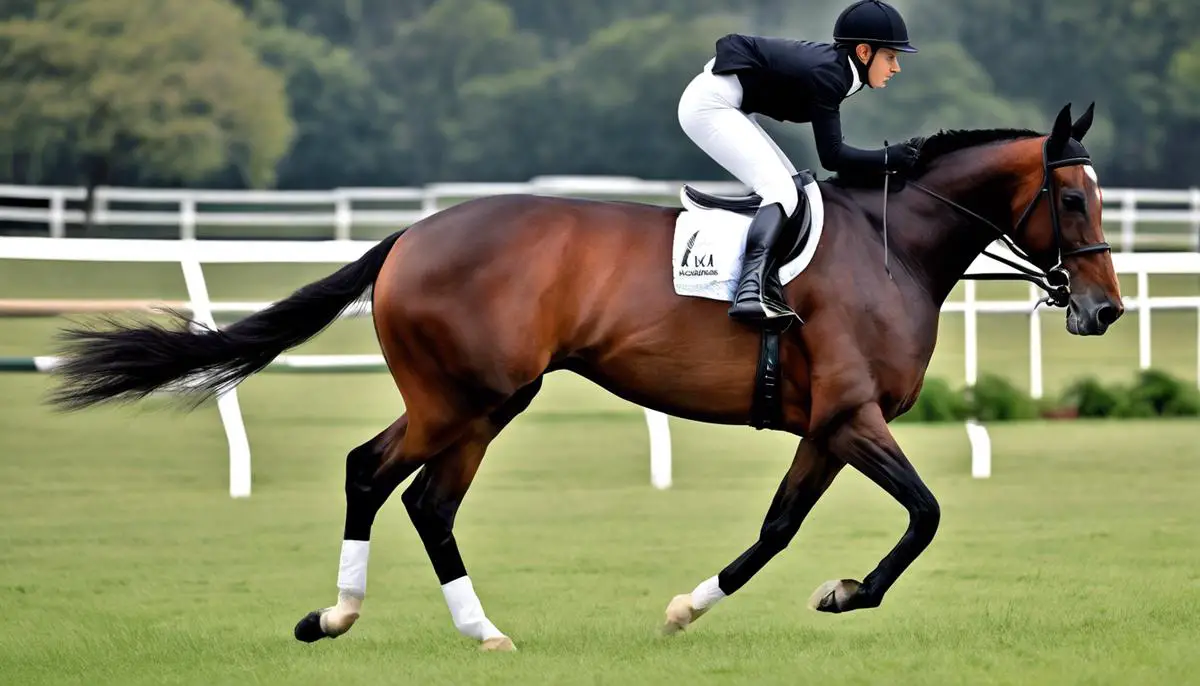Unveiling the majestic and captivating world of horse breeds, this exploration delves into two of the most renowned equine types: Thoroughbreds and Warmbloods. Each brings unique qualities and subtle nuances that contribute to the equestrian realm, a testament to their distinct lineage and aspirational breed attributes. Thoroughbreds, hailed for their unrivaled speed and endurance, are the epitome of athletic prowess. Warmbloods, on the other hand, present a formidable stance in agility-based disciplines and exhibit a temperament that has won the hearts of many enthusiasts. As we venture further, we will scrutinize these breeds in terms of their individual performance abilities, health concerns, lifespan, and the necessary training and care. Whichever path one prefers, a journey with either a Thoroughbred or a Warmblood promises an enchanting saga of equine mastery and companionship.
Table of Contents (Horspedia)
Introduction to Breed Characteristics
Thoroughbreds vs. Warmbloods: Understanding the Hallmarks of Each Breed
Upon delving into the captivating world of horse breeds, plenty of enthusiasts quickly fall under the spell of Thoroughbreds and Warmbloods – two breeds known for their unique characteristics and captivating history. The sheer combination of power, skill, speed, and aesthetics in these breeds makes horse-loving hearts beat a little faster.
Thoroughbreds, originally from England in the 17th and 18th centuries, are renowned for their speed, agility, and spirit. These are “hot-blooded” horses, meaning they are enthusiastic, lively and sometimes even a bit fiery – a nod to their Arabian ancestors. The Thoroughbred typically stands between 15.2 and 17.0 hands high and showcases a well-chiseled head, high withers, a deep chest, a short back, and lean body. Their distinctive features make them perfect for horse racing, an adrenaline-fueled sport where their heart and agility truly shine.
Notably, Thoroughbreds are known for their impressive stamina and resilience, allowing them to excel not only in racing but dressage and jumping too. Their speedy nature combined with these traits also make them a favored choice for polo and fox hunting.
Then there’s Warmbloods that represent a group of middle-weight horse types primarily from Europe and are known for their calm and cool demeanor, hence the term “warmblood.” These horses have been expertly bred for centuries, resulting in high-quality horses that are a blend of “draft” (cold blooded) and “racers” (hot-blooded), combining the power and calm of the former with the speed and spirit of the latter.
Warmbloods are universally loved for their versatility as sport horses. Ranging in height from 15.2 to 17.3 hands, their physical characteristics have much more variance than Thoroughbreds. Generally, these horses have a rectangular build, muscular body, strong legs, and a well-set neck. Their calm demeanor combined with their strength and physique makes them ideal for a variety of equestrian disciplines, including show jumping, dressage, and eventing. Warmbloods often carry themselves with an air of elegance and grace, sophisticating any field they grace with their presence.
Warmbloods enjoy slow, steady growth which contributes to their incredible strength and resilience. Their special quality lies in their balanced movement, making them a favored choice for participants of dressage.
This fascinating exploration of Thoroughbred and Warmblood breeds exposes not just the differences but also the strengths that make these two breeds so beloved in the equine world. The athletic prowess of the Thoroughbred pairs elegantly with the powerful grace of the Warmblood, each horse breed offering a unique set of skills and attributes that cater to a range of equestrian pursuits.
In the end, choosing between a Thoroughbred and a Warmblood often comes down to personal preference and the specific requirements of the sport or activity in question. Both breeds embody the incredible diversity within the equine world and the profound connection between these magnificent animals and the humans privileged to ride them.
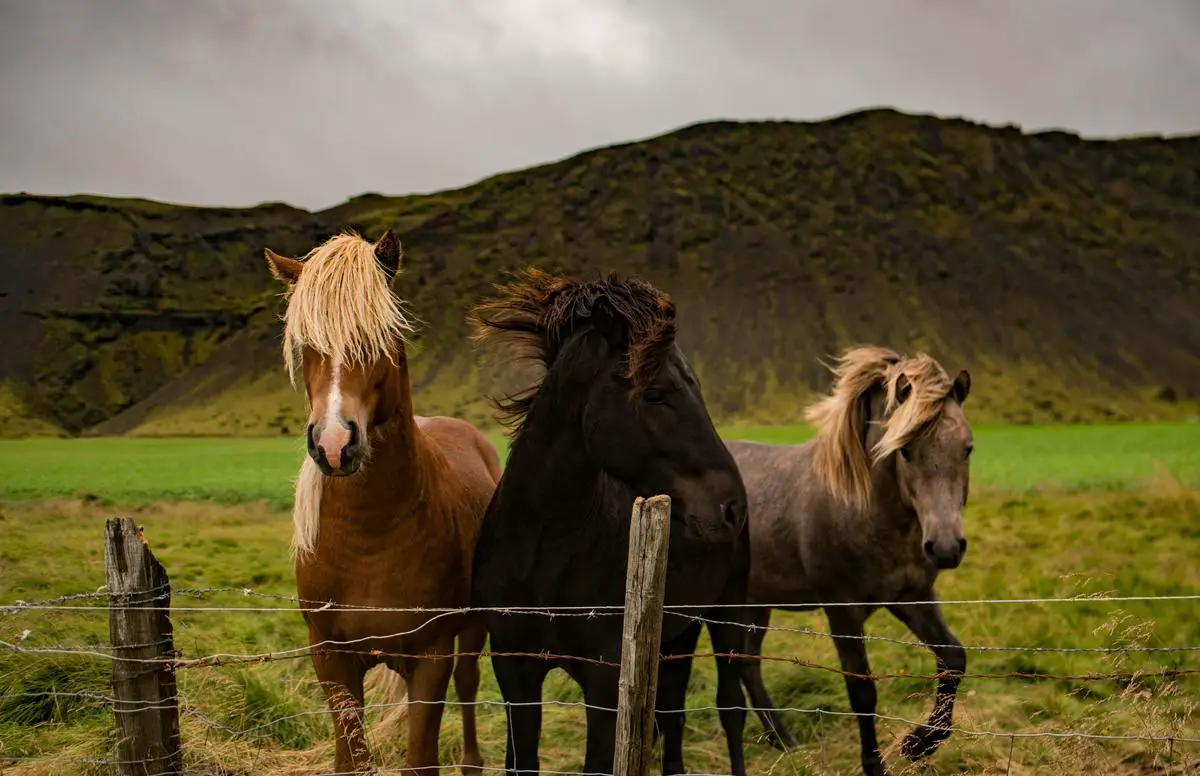
Photo by timothymuza on Unsplash
Performance and Abilities
Moving on from the introduction to the history, characteristics, and strengths of both Thoroughbreds and Warmbloods, let’s delve a little deeper into how these unique breeds perform. Given that equestrians have various skill levels and expect different things from their horse, it is indeed wise to understand how Thoroughbred and Warmblood breeds perform in terms of speed, agility, and endurance.
Renowned for their explosive speed, Thoroughbreds are the superstars of the racetrack where every split-second counts. Their physiological structure matched with spirited nature allows them to reach high velocity quickly, making them powerful sprinters. With a well-defined musculature that promotes a lengthy stride, Thoroughbreds have, over centuries, carved out a niche in racing circuits around the world. Remember, it is common to see Thoroughbreds reach speeds of up to 40 to 45 miles per hour!
However, if agility is the game, Thoroughbreds can be trumped by their Warmblood peers. Considering Warmbloods are often bred for disciplines requiring more intricate manoeuvers, they’re blessed with an innate aptitude for quick directional changes and complex movement patterns. This acute agility comes from their solid, well-conformed limb structure and a cool, calm demeanor that allow them to perform intricate tasks with grace. From tackling tight corners in show jumping circuits to mastering the dance-like moves of dressage, Warmbloods seemingly perform these with ease.
Endurance, however, is a facet where both breeds shine differently. Thoroughbreds, thanks to their hot-blooded nature, can keep up sustained speed over a certain distance making them ideal for sports like polo and eventing where bursts of speed are needed over a set time. Their hearts are typically larger and their lean but strong build aids them in these endeavors.
In contrast, Warmbloods might not match Thoroughbreds in raw speed, but they show outstanding endurance in sustained performance over longer periods. Their slower growth pace allows their body and bone structures to develop more soundly, resulting in a horse that is resilient and strong. Their calm temperament aids them in pacing themselves better over long periods, making them ideal for strenuous sports such as cross-country eventing and endurance riding.
Yet, it’s also important to appreciate the role of training and individual variation. Not every Thoroughbred will break speed records, and not every Warmblood will master dressage or show jumping. An individual horse’s performance will depend quite a bit on its training, genetic makeup, and even its unique personality.
In conclusion, both Thoroughbreds and Warmbloods have their own sets of strengths in terms of speed, agility, and endurance. It may also be the case that one breed may suit a specific discipline better than the other, offering a thrilling angle to the fascinating world of horses.
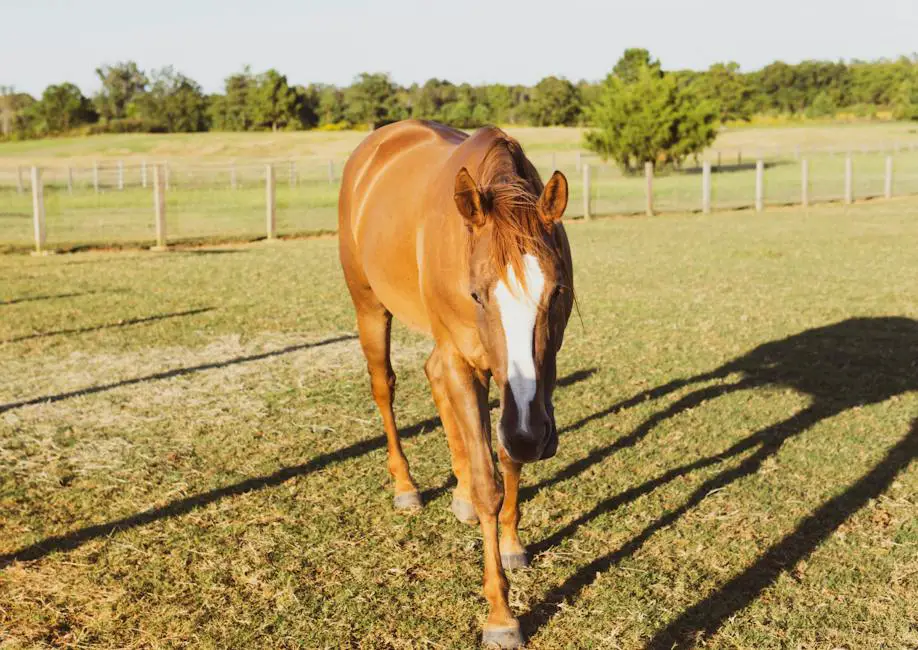
Health and Lifespan Concerns
Venturing beyond the physical attributes and areas of expertise of these equine powerhouses, let’s explore the realm of health and lifespan amidst Thoroughbreds and Warmbloods. Equine enthusiasts would agree that understanding this aspect is incredibly vital in the quest for greater horsemanship.
Diving into Thoroughbreds, these steeds are renowned as high energy dynamos, and their intense training regimens often expose them at a young age to more potential for injuries than horses in less strenuous activities. Feeding protocols that cater to their high-energy needs sometimes make Thoroughbreds prone to gastrointestinal diseases like ulcers or colic. Their inherent agility and speed, while a boon on the race tracks, can lead to musculoskeletal problems, particularly in their legs and feet. Laminitis, a painful condition affecting the horse’s feet, is fairly common in Thoroughbreds. Acknowledging such health issues, Thoroughbreds are pitched to have a lifespan ranging from 25 to 30 years, conditional on responsible ownership and healthcare.
On the other flank, turning to Warmbloods, these breeds have historically been bred for utility, durability, and longevity, traits that are manifest in their health and lifespan. They exhibit lower susceptibility to skeletal injuries compared to Thoroughbreds, making them somewhat hardier breeds. However, this doesn’t make them immune to health issues. Warmblood fragility syndrome and osteochondrosis can be quite prevalent amongst this group, reflecting certain inherent genetic conditions. Nevertheless, by harnessing diligent care, regular health check-ups, and genetic testing, these issues can be managed efficiently. Pooled data points towards Warmbloods boasting a life expectancy of approximately 25-30 years, very much in the same realm as Thoroughbreds.
However, longevity in horses, much like in humans, is contingent on numerous factors beyond breed. Nutrition, exercise, veterinary care, and overall management play significant roles in the lifespan of horses. For instance, keeping horses engaged, mentally stimulated, and in social groups can contribute positively to their overall well-being and lifespan.
It is imperative to recognize that health and lifespan differences between Thoroughbreds and Warmbloods should be considered with a grain of salt. Each horse is an individual, and sweeping generalizations about health and lifespan could disregard significant individual aspects such as genetics, environment, training, and care. Rather than drawing fixed conclusions based on breed, understanding and attending to an individual horse’s specific needs can yield a healthier, happier, and potentially longer life.
In conclusion, both Thoroughbreds and Warmbloods come with their unique strengths and susceptibilities in terms of health and lifespan. Knowledge about these aspects can enrich an equestrian journey, nurturing the bond between the horse and the rider, trumping any rigid breed comparisons. After all, it’s the heightened synergy with these magnificent creatures that truly make horse-riding an unparalleled experience.

Training and Care
Diving deeper into the world of Thoroughbreds and Warmbloods, it’s time to explore the distinct training and care requirements that these powerhouse breeds have while taking into account their divergence in physical attributes, temperaments, and vulnerabilities.
Thoroughbreds, known for their lightning-fast speed and agile movements, are inherently high-strung and energetic. This temperament is advantageous for their typical sporting pursuits, yet it warrants a unique set of training techniques and care requirements. Lively, spirited Thoroughbreds respond well to consistency, patience, and positive reinforcement. Furthermore, their training should involve ample physical and mental stimulus to channel their vivacious energy productively.
Just as Thoroughbreds are built for speed, their training should center around cardiovascular conditioning, emphasizing speed development and endurance. Additionally, the utmost attention should be paid to their diet, ensuring they receive low-starch, high-energy nutrition required to fuel their intense physical activities. Their lean body condition should be monitored closely, as Thoroughbreds can be susceptible to dramatic weight loss, especially during high-stress periods.
Transitioning to Warmbloods, these equine athletes are admired for their cool demeanor. Though they can excel in a variety of sports, their powerful build and composed temperament make them particularly well-suited for disciplines requiring complex maneuvers and controlled, expressive movements like dressage.
Training for Warmbloods should focus on building their strength and enhancing their naturally balanced movement. Encouraging flexibility, rhythmic cadence, and the development of a strong top line should be highlighted during their training routines. Their cool demeanor allows for a more relaxed approach to training, but constant mental engagement remains essential. Similarly, care procedures can vary from those of Thoroughbreds. Warmbloods typically gain weight easily, necessitating a carefully managed diet to prevent obesity and related health problems.
Reflecting upon their physical robustness, Warmbloods often require more extensive grooming routines compared to Thoroughbreds. Especially, their abundant manes and tails need consistent attention to prevent matting and promote healthy growth.
Lastl, the matter of health and longevity for both breeds is crucial. Despite their stark physical differences, Thoroughbreds and Warmbloods encounter parallel challenges concerning musculoskeletal issues, necessitating regular vet check-ups and a strong focus on prevention rather than treatment. Regardless of the breed, the key to longevity is meticulous care and management, taking into account the individual horse’s needs and aptitudes.
Enthusiasts of the equestrian world can attest – whether your loyalty lies with the strapping Thoroughbred or the composed Warmblood, each breed brings a distinct set of challenges and rewards. Respecting these differences by tailoring your approach to training and care can foster not only a winning performance but also a thriving horse.
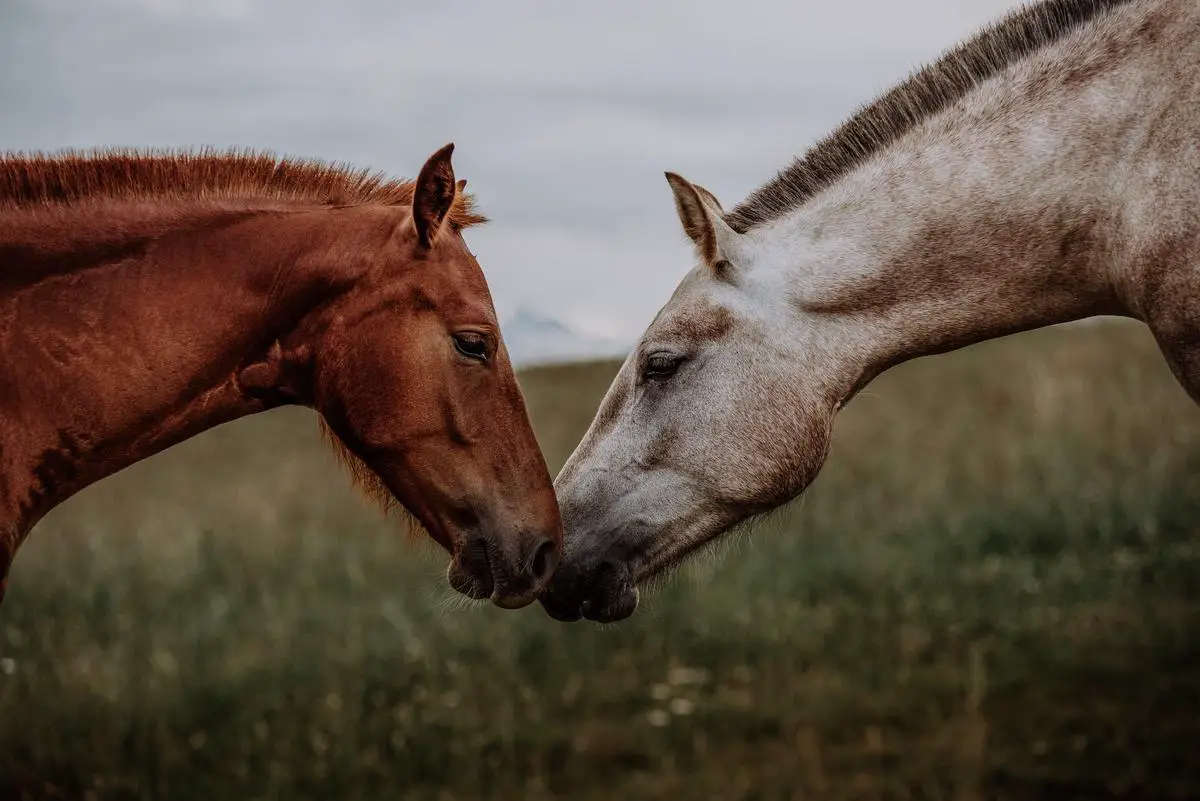
Photo by larabaeri on Unsplash
Making the Choice
Expanding the equestrian journey leads one to an important consideration when deciding between owning a Thoroughbred or a Warmblood: the rider’s experience and skill.
Thoroughbreds, being spirited and agile, may require an experienced rider who can handle their spirit and respect their sensitivity. Thoroughbreds often thrive with more experienced riders who can channel their energy into productive, athletic endeavors. They respond exceptionally well to a rider who is attuned to their needs and who can provide them with the appropriate guidance, support, and care.
On the other side, Warmbloods, with their calm demeanor, are often a great choice for less experienced riders or those who are looking for a reliable companion for various equestrian sports. While Warmbloods still require a knowledgeable handler, their patient and gentle nature makes them a suitable match for those still learning the ropes.
Harnessing the potential of these equine powerhouses also requires looking into their individual disposition and mental characteristics. Thoroughbreds are known for their courageous hearts and alert minds. They are highly attentive and curious, thriving on intellectual stimulation. Their intelligent nature demands regular mental engagement and consistent work to prevent boredom-centric behavioral problems.
Warmbloods, on the other hand, known for their patient and docile personalities, demand a relaxed approach to training that emphasizes constant mental engagement. Their calm demeanor should not be mistaken for a lack of intelligence or drive. Indeed, Warmbloods can be incredibly focused when engaged properly, and their laid-back nature often allows them to take training and new experiences in stride.
The sheer magnitude and range of equestrian activities should be considered when choosing between a Thoroughbred and a Warmblood. If thrill and speed are looking to be brought on board, Thoroughbreds are known for their aptitude in sport activities that demand speed and endurance, such as eventing and racing. Their speed and stamina make them an excellent choice for these high-energy sports.
Warmbloods perform exceptionally well in disciplines requiring power, precision and cool-headedness. Their slow, steady growth imparts them with tremendous strength and resilience, making them highly suited for showjumping, dressage, and three-day eventing, to name a few.
Last but certainly not least, one pivotal factor to consider is the rider’s specific goal and vision for their equestrian journey. The choice between a Thoroughbred and a Warmblood often comes down to the unique desires, skills, and requirements of the rider and the specific equestrian activities they wish to pursue. Always aim to remember that no matter the breed, each horse is unique and deserves respect, patience, and understanding – and that’s a universally accepted truth in the equestrian world.
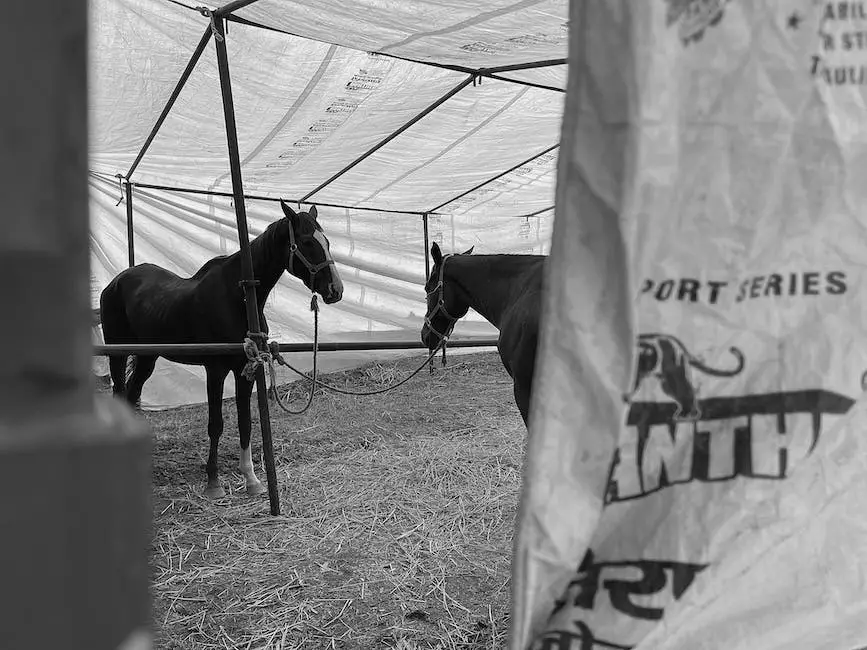
Choosing between the speed and endurance of a Thoroughbred and the agility and temperament of a Warmblood is like deciding between distances for a marathon race or an obstacle course. Both have their highlights and challenges, and ultimately, the decision becomes deeply personal, revolving around unique preferences, capabilities, goals, and resources. Like any enduring partnership, the journey shared with these noble creatures extends beyond mere ownership. It requires engagement, commitment, understanding, and a profound passion for their unique attributes and possibilities. No matter the breed chosen, the result echoes the timeless beauty of equestrian partnerships, a harmonious blend of humankind’s ingenuity and nature’s masterstrokes, creating a lifelong bond between horse and human.
